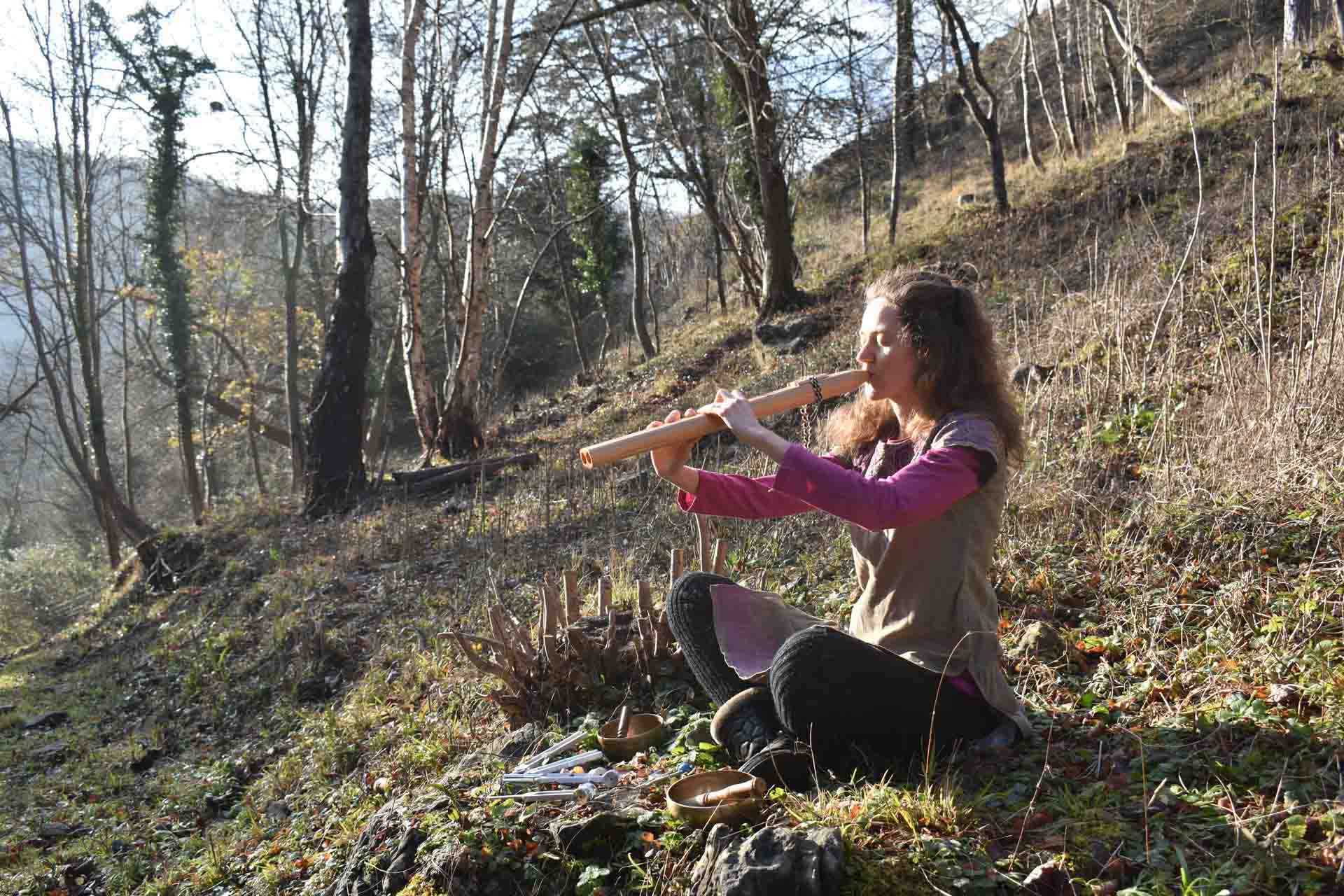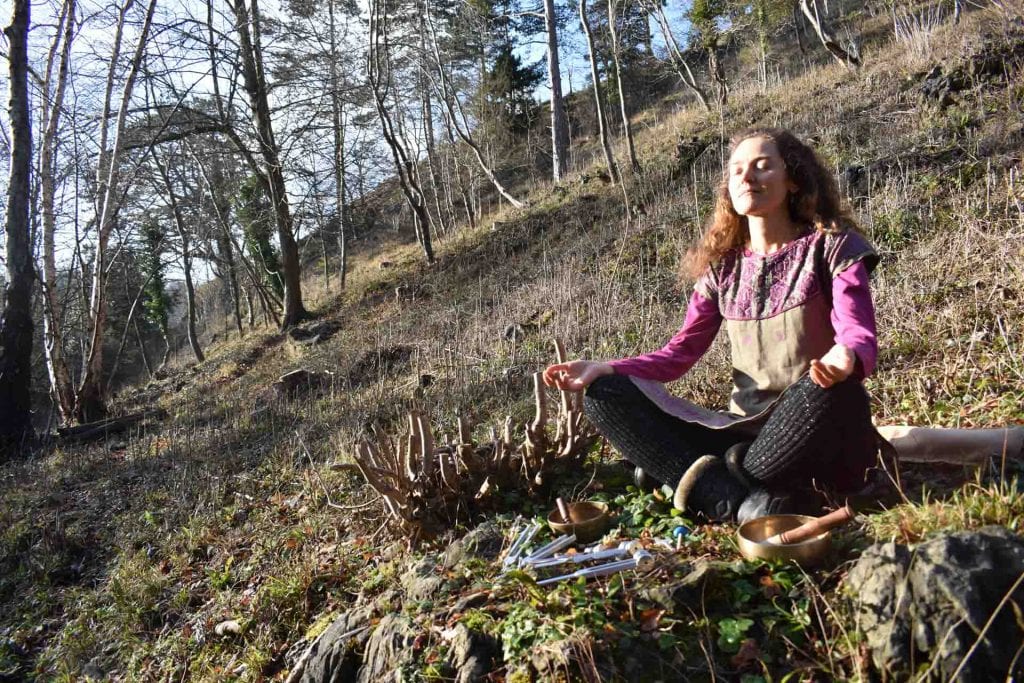
The Importance of Breathing in Flute Playing
Published: 16th January 2019 | Updated: 6th February 2019 | Author: Belén Prado
Discover how improving your breathing can help you in your flute playing!
Breathing is an essential part in flute playing. In my workshops I always say that instead of blowing into the flute we should breathe into the flute. And you don’t need to use much air in order to do that, you just need breath control to use the air you put into the flute efficiently. In order to do that, you need to use the diaphragm, which is the primary muscle involved in the breathing process. The location of this dome-shaped muscle is below the lungs and heart, and it is contracting continuously while we breathe in an out.
When we breathe, our ribs are the first ones moving and this movement expands our rib cage, allowing the air entering inside. As the chest expands, a space is created in the lungs and the diaphragm moves down creating even more space in the lungs. Being aware of this movement would help us to use the diaphragm more efficiently which would be very beneficial for flute playing. A certain amount of tension in the diaphragm muscles allows expressive volume changes, and this provides in part the characteristic “feel” of the NAF.
 We are not only improving our flute playing by breathing properly, but also our health will be benefited. Short and superficial breathing with incomplete exhalations will make you feel more anxious and will negatively affect your health in the long term. Developing breath control will help you to keep calm and manage your emotions much better. After all, breathing has been used as the main tool in most meditation techniques, because focusing our attention on breathing helps greatly to quiet our minds. This explains why playing the flute with breath control can help us to get into meditative states easily and achieve deep relaxation.
We are not only improving our flute playing by breathing properly, but also our health will be benefited. Short and superficial breathing with incomplete exhalations will make you feel more anxious and will negatively affect your health in the long term. Developing breath control will help you to keep calm and manage your emotions much better. After all, breathing has been used as the main tool in most meditation techniques, because focusing our attention on breathing helps greatly to quiet our minds. This explains why playing the flute with breath control can help us to get into meditative states easily and achieve deep relaxation.
If you think that you are not breathing properly and you are struggling when playing long notes on the flute, I recommend you to start getting to know your current breathing process. You can do so by placing one hand on your chest and another one on your belly as you breathe normally. Then observe which hand is moving more and this will give you an idea of your breathing pattern. You can also place your hand on your lower back, your throat and your diaphragm area. I always ask my students to do this before introducing them to some breathing exercises at my workshops.
There are many breathing techniques to achieve breath control,and the most popular is pranayama which is an essential part of the yoga tradition. Prana is the life force that sustains the body and  Ayama translates to extend. Together they mean breath control. We can work with pranayama through different exercises and poses to greatly improve our breath control. There is a simple practice that develops your ability to fill your lungs completely, and this is called “belly breathing”. In order to do that, just place your hands on your belly and take a deep breath. You should feel your belly expanding as you inhale and your hands moving outwards. If this is not happening, most likely you are breathing into your chest area. Make sure that your shoulders are not moving while you are breathing; remember that the movement is in the rib cage. Exhale for a long time until there is no air left in your lungs. The exhalation should be longer than the inhalation. Keep breathing deeply and slowly focusing on what your body is doing and this breathing technique will come to you. Your body will do what the mind wants it to do.
Ayama translates to extend. Together they mean breath control. We can work with pranayama through different exercises and poses to greatly improve our breath control. There is a simple practice that develops your ability to fill your lungs completely, and this is called “belly breathing”. In order to do that, just place your hands on your belly and take a deep breath. You should feel your belly expanding as you inhale and your hands moving outwards. If this is not happening, most likely you are breathing into your chest area. Make sure that your shoulders are not moving while you are breathing; remember that the movement is in the rib cage. Exhale for a long time until there is no air left in your lungs. The exhalation should be longer than the inhalation. Keep breathing deeply and slowly focusing on what your body is doing and this breathing technique will come to you. Your body will do what the mind wants it to do.
In order to become more aware of your diaphragm, try this variation of the exercise. Keep breathing as before with your hands on your belly but use one of your hands to press hard against your belly. When you inhale, the diaphragm will have to make more effort to push the air down. Feel the movement of the diaphragm. This exercise can strength your diaphragm which will help you breathe better.
 Here is an exercise I teach at my workshops to help play long notes: Take a deep breath and put your lips sharp like when you are going to whistle. Now start exhaling slowly on your hand. The channel for the air should be very narrow. You have to feel the air coming out cold on your hand (if you feel it warm, then you are exhaling too quickly). The duration of this exhalation should be around 30 seconds. Feel the diaphragm controlling the amount of air coming out from your mouth. It has to be very slow. Being able to exhale for a long time will help you in your flute playing.
Here is an exercise I teach at my workshops to help play long notes: Take a deep breath and put your lips sharp like when you are going to whistle. Now start exhaling slowly on your hand. The channel for the air should be very narrow. You have to feel the air coming out cold on your hand (if you feel it warm, then you are exhaling too quickly). The duration of this exhalation should be around 30 seconds. Feel the diaphragm controlling the amount of air coming out from your mouth. It has to be very slow. Being able to exhale for a long time will help you in your flute playing.
More exercises can be found at the website of Flutopedia.
I also like the approach of Buteyko Breathing Method that provides exercises to reduce over-breathing (‘chronic hyperventilation’). According to this method, when people breathe too much, the levels of oxygen in tissues and organs are reduced (even if you would think the contrary!). This can result in many health problems such as asthma, sleep apnea, digestive issues, anxiety, depression… They insist in the importance of switching from mouth to nose breathing and reduce the breathing volume in order to get the right levels of gases in the blood. Practising these exercises can alleviate many health problems and have more mind control.

To summarise, breathing is not only essential in flute playing, but in every aspect of our life. Improving our breathing will not only improve the quality of our playing, but also the quality of our lives. So we can say that flute playing will benefit our health because we are working with our breathing. And also by improving our breathing, we will avoid damaging the flute with the condensation that too much blowing can cause in the flute. If you are interested in learning to play Native American flute as well as some breathing exercises, please check my flute tuition page. Hope you found this post inspiring and happy breathing!

All comments are moderated before being published